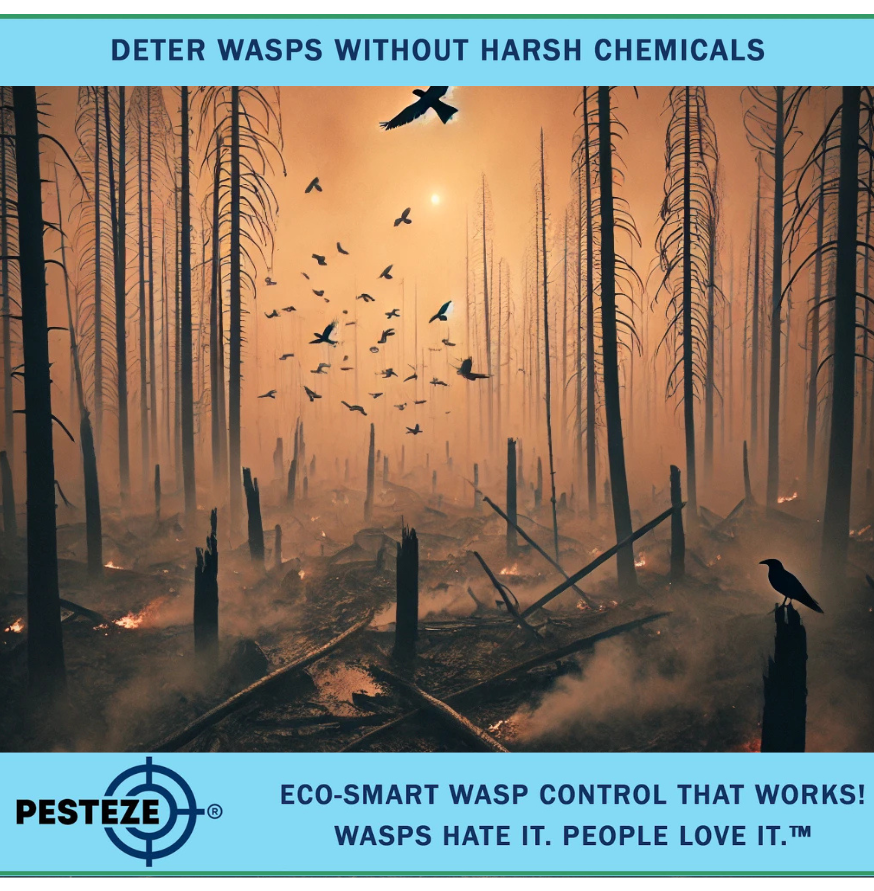HOW TO DETER BIRDS AFTER A FIRE

HOW TO DETER BIRDS AFTER A FIRE
SUMMARY
After a fire, birds may be drawn to affected areas in search of food, shelter, or nesting spots. While they play an important role in ecological recovery, they can also hinder rebuilding efforts or create sanitation issues. Using humane deterrents such as visual repellents, sound devices, and physical barriers can help keep birds away from sensitive areas. Habitat modification, including removing attractants and securing food sources, further discourages their presence. By implementing these strategies, you can effectively manage bird activity while allowing the environment to recover naturally.
FEATURES
- Visual Deterrents: Hang reflective tape, install scare devices, or use predator decoys to keep birds away.
- Sound-Based Repellents: Ultrasonic devices, distress calls, or wind chimes can disrupt bird presence.
- Physical Barriers: Netting, spikes, or wire mesh prevent birds from perching on structures.
- Food Source Management: Clear debris and remove food attractants to reduce bird activity.
- Tree and Vegetation Control: Trim burned or weakened trees that could serve as roosting spots.
- Water Management: Drain standing water to discourage birds from gathering.
DESCRIPTION
After a fire, birds often flock to affected areas due to exposed food sources, open nesting spaces, and reduced natural predators. While they contribute to ecological regeneration, their presence can be problematic in areas undergoing reconstruction. Implementing bird deterrents helps balance natural recovery with human efforts to restore the landscape.
Visual deterrents are among the most effective methods for keeping birds away. Hanging reflective tape, installing scare devices, or placing predator decoys like fake owls can make birds uncomfortable and discourage them from settling. Sound-based repellents, such as ultrasonic devices or distress calls, further disrupt their behavior. Wind chimes and sudden noises can also be useful in deterring flocks from returning to the same spot.
Physical barriers offer long-term solutions for bird control. Netting, spikes, and wire mesh can prevent birds from perching on structures, ensuring they do not nest or roost in unwanted areas. Combining these barriers with habitat modification improves effectiveness. Removing food sources—such as exposed grains, fallen fruit, or unsecured trash—reduces the appeal of fire-affected zones. Clearing debris and trimming trees that could serve as perching areas also discourages bird activity.
Water sources play a crucial role in bird attraction. Standing water, which often collects after firefighting efforts, should be drained to prevent birds from gathering. Additionally, maintaining controlled landscaping by replanting fire-resistant vegetation can help guide birds toward designated areas rather than interfering with rebuilding efforts.
While deterring birds after a fire is necessary in certain situations, it is essential to use humane and environmentally friendly techniques. The goal is not to eliminate birds entirely but to manage their presence in a way that aligns with post-fire recovery and reconstruction. By combining deterrents with habitat control, you can create a balanced approach that protects both human efforts and wildlife.
- Maanas Mehta


Comments 0